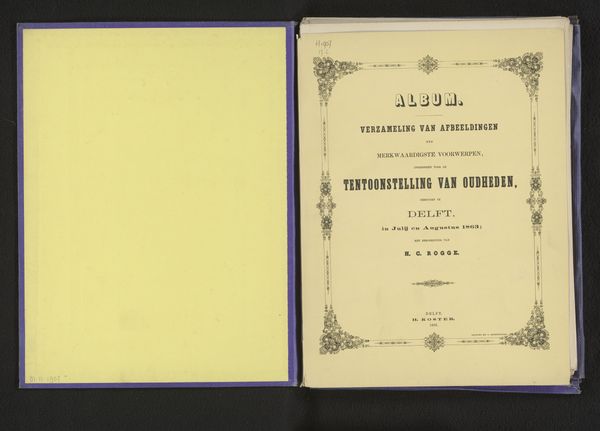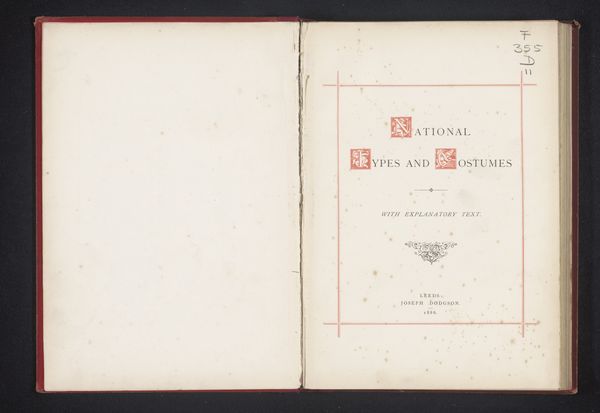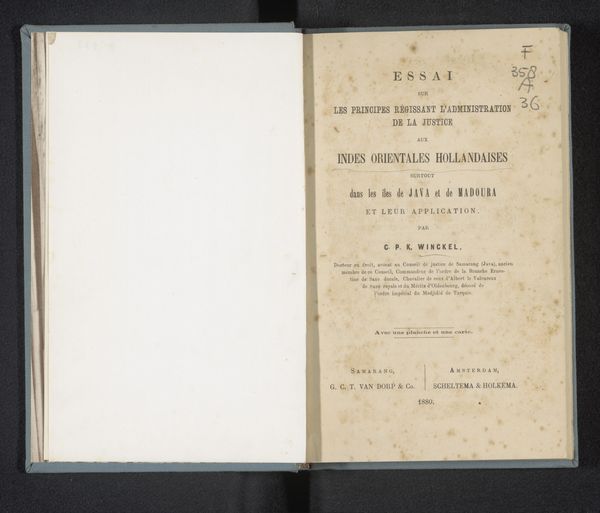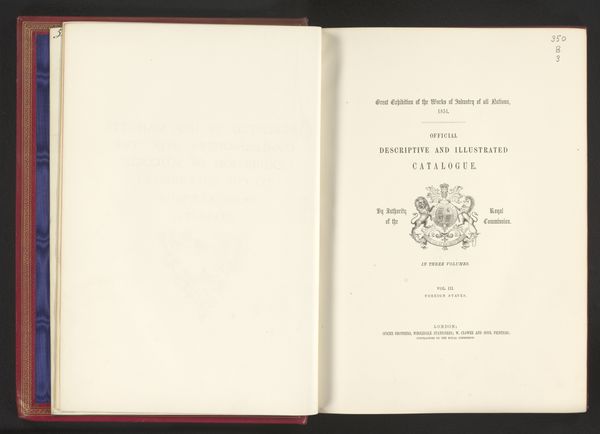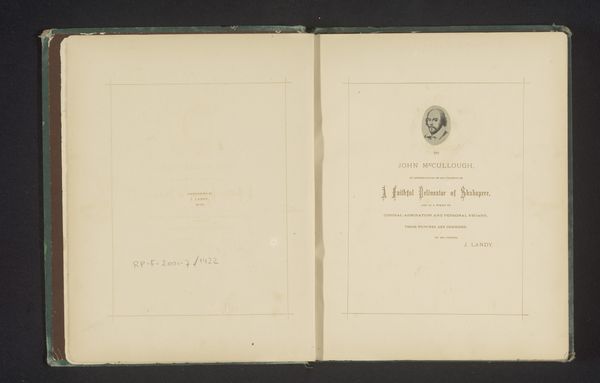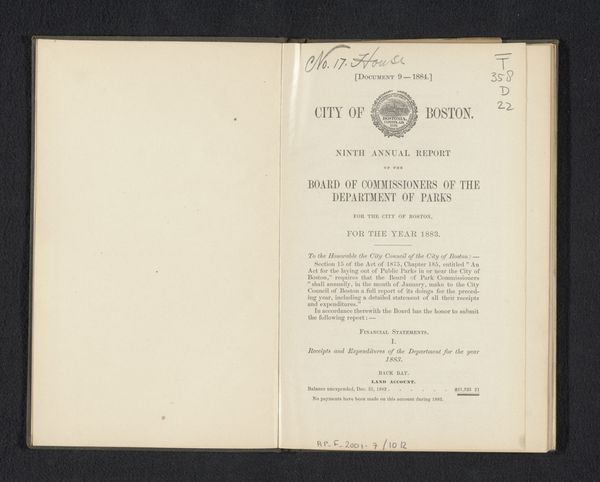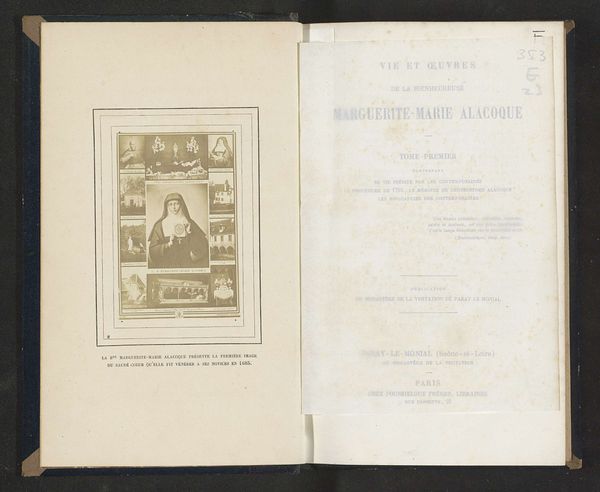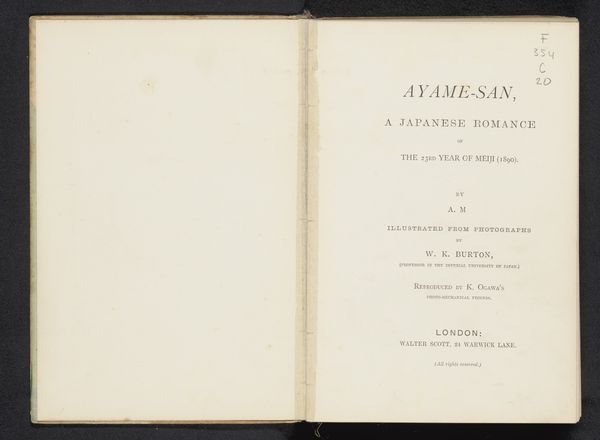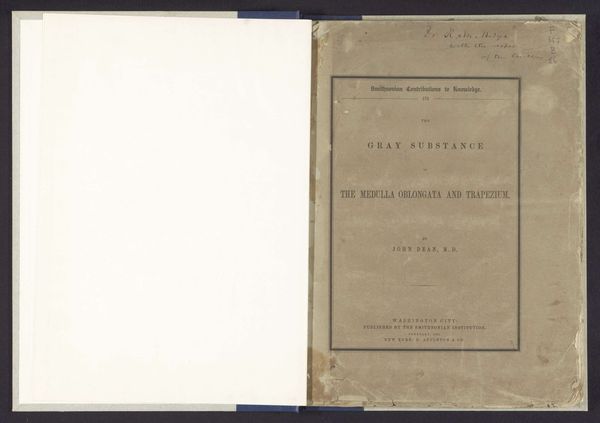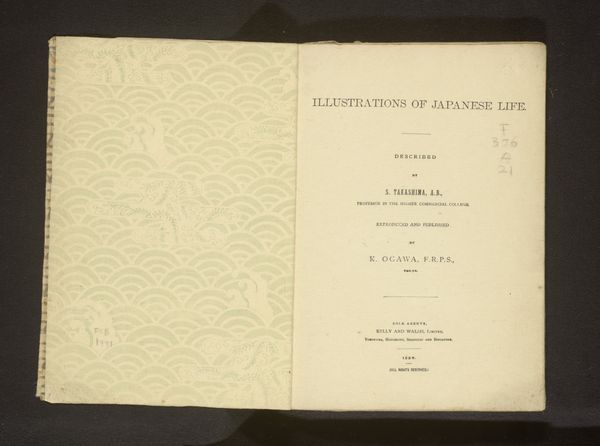
The history of the Imperial Assemblage at Delhi held on the 1st January, 1877, to celebrate the assumption of the title of Empress of India by Her Majesty the Queen including historical sketches of India and her princes past and present c. 1877
0:00
0:00
#
aged paper
#
script typography
# print
#
sketch book
#
hand drawn type
#
personal journal design
#
personal sketchbook
#
hand-drawn typeface
#
fading type
#
orientalism
#
sketchbook drawing
#
history-painting
#
sketchbook art
Dimensions: height 310 mm, width 255 mm, thickness 55 mm
Copyright: Rijks Museum: Open Domain
Curator: This strikes me as a relic from a bygone era, doesn't it? All restrained typography and faded glory, like a pressed flower in a very serious book. Editor: It is that! What we're looking at is the title page of "The history of the Imperial Assemblage at Delhi held on the 1st January, 1877, to celebrate the assumption of the title of Empress of India by Her Majesty the Queen including historical sketches of India and her princes past and present", printed around that same year. The author was James Talboys Wheeler. Curator: That's a mouthful of a title! You can almost feel the weight of the empire just dripping off the page, can't you? And the hand-drawn typeface gives it a curiously personal touch, at odds with the grandeur it's trying to evoke. Editor: It’s a fascinating clash. The content promotes imperial authority, but the format reflects 19th-century print culture where such elaborate commemorations were popular among educated readers. Mass produced but striving for that feeling of bespoke prestige, a kind of aspiration toward permanence, of enshrining history as it happens. Curator: Absolutely. Like pinning a butterfly – beautiful, significant, but ultimately, it alters the essence. I wonder what the Indian princes thought about being "sketched" into this narrative? Editor: That’s precisely where the critical lens is needed. These historical sketches operate within a political context. This isn't just about chronicling; it's about framing, justifying, and solidifying power dynamics. Curator: Power loves a good frame, doesn't it? Even now, the story remains unwritten on the left page. That's where we come in, I suppose, to add a few thoughts to the mix. Editor: Precisely, and by looking at artifacts like this, and questioning their narratives, we keep the dialogue alive and relevant, constantly re-evaluating the forces that shape both history and representation.
Comments
No comments
Be the first to comment and join the conversation on the ultimate creative platform.

